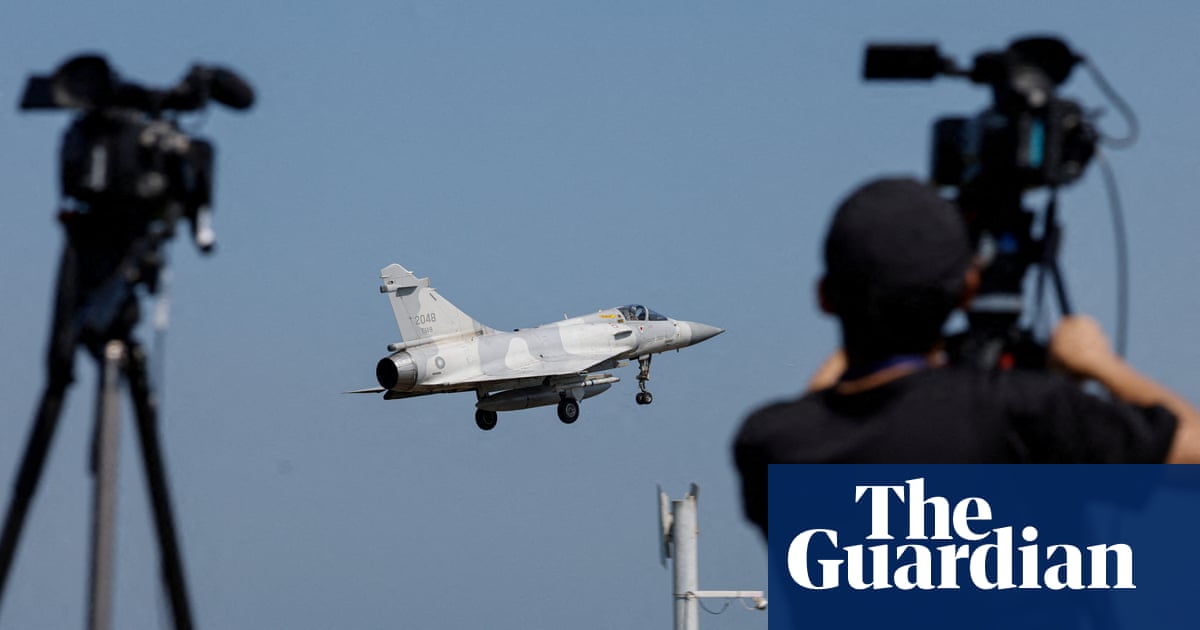China’s military and coast guard have surrounded Taiwan’s main island as part of large-scale drills that it said were a warning against “separatist acts”, in the wake of a recent speech by Taiwan’s president.
State media linked Monday’s drills to a National Day speech last Thursday by Taiwan’s president, Lai Ching-te, in which he repeated that the People’s Republic of China “has no right to represent Taiwan”, but he was willing to work with it to maintain peace and stability.
On Monday the People’s Liberation Army (PLA) said all branches of the military were approaching Taiwan by sea and air. The joint drills would focus on sea and air combat-readiness, blockading key Taiwanese ports and areas, and assaults on maritime and ground targets, said the Eastern Theatre Command’s spokesperson, senior captain Li Xi.
“The drill also serves as a stern warning to the separatist acts of ‘Taiwan Independence’ forces,” Li added.
At the same time the Chinese Coast Guard, which is separate to the military but serves under the same commanding body, also announced “law enforcement patrols” around the main Taiwan island. The illustrated patrol paths encircled Taiwan’s main island, and were described as “a practical action to control Taiwan Island in accordance with the law based on the one-China principle”.
The PLA did not say when the drills would end, and did not announce any live-fire or no-fly zones. Provided maps showed nine declared zones for the exercises, including six large areas near Taiwan’s major ports.
Taiwan’s Mainland Affairs Council called Monday’s drills “blatant provocations” that seriously undermined regional peace and stability. The Ministry of Foreign Affairs called on Beijing to “pull back from the brink of a precipice”, while the president’s office urged Beijing to accept the “good will” offered in Lai’s speech. It said Lai had convened a national security meeting to respond.
In Washington, officials from the Biden administration said they were monitoring the drills and there was no justification for them after Lai’s “routine” speech.
“We call on the PRC to act with restraint and to avoid any further actions that may undermine peace and stability across the Taiwan Strait and in the broader region, which is essential to regional peace and prosperity and a matter of international concern,” state department spokesperson Matthew Miller said, using the initials for China’s official name.
China’s leader, Xi Jinping, claims Taiwan is a Chinese province and has urged it to accept what he calls “peaceful reunification”. But an overwhelming majority of Taiwan’s people and parliament reject the prospect of Communist party rule. In response, Beijing has escalated military exercises and incursions into Taiwan’s air defence zone, as well as cognitive, technological and economic warfare, and mass disinformation campaigns. US intelligence reportedly claims Xi has instructed the military to be capable of a full-scale invasion of Taiwan by 2027.
Lai’s National Day speech was seen by analysts as restrained, and more measured than his May inauguration speech. Writing for the Council on Foreign Relations, David Sacks said on Friday that if China were to react aggressively to it, then “Lai may very well conclude (not without reason) that there is little to be gained through restraint and may embrace more explicit rhetoric on cross-strait relations”.
Monday’s exercises, codenamed “Joint Sword 2024B”, had been largely expected by observers. Exercises named “Joint Sword 2024A” were launched after Lai’s inauguration, the “A” suffix suggesting there were more to come this year.
The PLA regularly runs military drills and at least one or two a year have focused on an invasion or blockade of Taiwan. Such military drills take substantial preparation but are usually linked to a speech or action in Taiwan which Beijing says it finds provocative.
Military analysts have warned each new set of drills has demonstrated strategic improvements or escalation in the PLA’s approach to Taiwan, even if there appears to be less firepower.
Last month China test-launched and intercontinental ballistic missile for the first time since the 1980s. The missile landed in the south Pacific, near French Polynesia, prompting statements of concern from Pacific nations. Last week China also participated in joint drills with Russia. On Monday Russian state media said the two militaries were continuing with anti-submarine firing exercises in the north-west Pacific.

